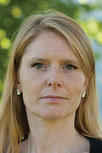ESMO’s strategic goal is to continually develop on-line educational tools for professionals in the field of Medical Oncology and foster new challenging CME opportunities for ESMO Members
What is ESMO V-Learning?
Recent scientific discoveries in cancer and signalling pathways for which an update of knowledge is needed and for its complete understanding additional video material is beneficialScience in cancer is moving rapidly and to keep in pace with rapid progresses, more complete understanding of molecular biology/pathology, or technological advances is needed. The V-Learning platform is ideal to present such novelties end enhance understanding of clinicians by additional visual components beyond classical slide presentationIt present in more realistic way what’s going on at the cancer cell level and provide in more details the mechanistic aspects involved in different cancer processes
The European Society for Medical Oncologists has many great resources for (continued) education. The newest family member are V-Learning lectures: slides and video sections combined (with questionnaires). Video lectures with slides are the format of the widely popular MOOCs, providing a more personal way of teaching than just hearing a voice from the off while seeing some slides. This integration of new trends in education into their continued education lectures is an innovative way of ESMO to further improve their programms.
See on www.esmo.org








